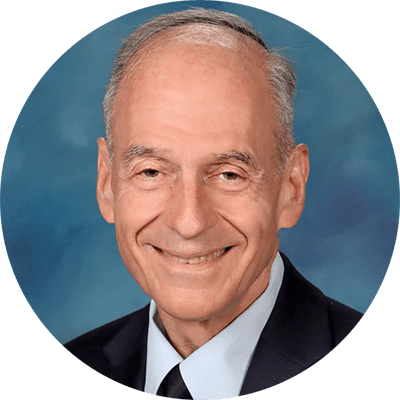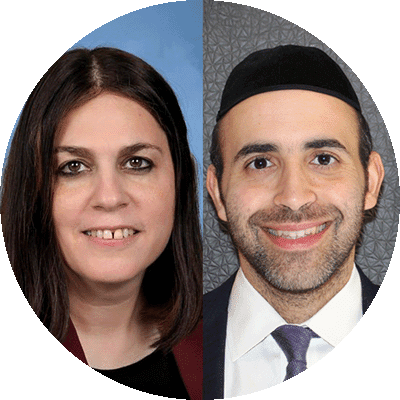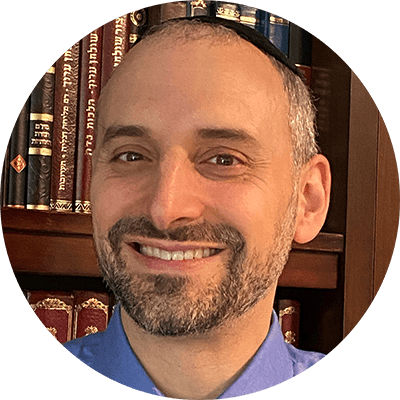Teaching Tanakh: A New Perspective on Pedagogy

Ziva R. Hassenfeld is the Jack, Joseph and Morton Mandel Assistant Professor in Jewish Education at Brandeis University, and director of the SCRoLL Lab. Dr. Hassenfeld’s new book, The Second Conversation: Interpretive Authority in the Bible Classroom, was recently published by Brandeis Press.
Central to my own Tanakh teaching, at almost every grade level, in almost every type of day school context, is the realization that my students don’t read Tanakh according to the same orientations or literacy practices, but it would be helpful if they did—at least for the duration of my class. Students may not show up to their classroom with a shared set of interpretive rules for reading biblical texts. As a result, teachers need to clearly articulate the interpretive rules they want to be used in their classroom without claiming that these rules are inherently “correct” or “right” and they also need to make clear that there is no expectation that this is how the students ought to read biblical texts outside this classroom.
This realization—that part of my work must be to induct students into the process of interpretation itself—was one of the most essential moments in my teaching journey.
In practice, this method involves ensuring students understand the interpretive rules of any given classroom and then allowing students to produce textual meanings following the interpretive rules of the classroom. For instance, if an interpretive rule involves identifying shared vocabulary between biblical stories and exploring their connections, students might link the narratives of Esther and Joseph, or connect “the voice of the shofar” with “the voice of God” in Exodus 19. Other interpretive rules might be to consider midrashic glosses on the biblical text as authoritative and take this expanded text as the starting place. Or, it might be to read with the goal of deriving morally normative messages from the narratives. Articulating the interpretive rules that your classroom is going to follow, and making sure everyone in the classroom understands those rules and has a chance to reflect on those rules, should be a primary focus of instruction in a Tanakh classroom, regardless of which orientation a teacher chooses. This approach prioritizes metacognition—a self-awareness of the processes we are doing—of the ways texts mean what we ascribe them to mean.
The Eminemic canon
What does it look like to prioritize the teaching of interpretive rules? Here’s an example from my first job teaching. I was tasked, in a pluralistic Jewish high school, with introducing my 12th graders to source criticism. To do so, my Eminem-loving husband and I crafted an admittedly unconventional approach: we applied the interpretive rules of biblical source criticism to the lyrics of Eminem. This was similar to what Professor David Clines did in 1998 where he applied a documentary method to the Winnie-the-Pooh stories.
I began the class by having my students read a fictional paper we wrote, “A Layman’s Introduction to the Multi-document Hypothesis of the Eminemic Canon,” which transplanted the core tenets of source criticism into the realm of hip-hop. Our 23-page “analysis” presented a compelling (albeit fabricated) case for multiple authorship of Eminem’s work based on criteria familiar to biblical scholars:
- Different names for the protagonist/God
- Variations in style and language
- Distinct thematic material
- Contradictions in storyline
The paper’s purpose was twofold: to introduce the methodology of source criticism and to separate it from the emotional and religious implications often associated with the documentary hypothesis of biblical texts. An excerpt from our paper on Eminem conveys the approach:
The argument against a single author of the Eminemic canon has traditionally stood on four central arguments. Understandably, many thinkers have been resistant to the multi-document hypothesis and have answered each of the central arguments with a variety of counterarguments. In the following, I will summarize each argument in turn and provide responses to the most compelling counterarguments that more traditional thinkers have supported.
The first argument rests on the obvious differences in the name by which the protagonist is called. Sometimes the protagonist is called “Slim Shady” (or simply “Slim” or “Shady”), sometimes “Eminem” and sometimes “Marshall Mathers” (or “Marshall”). The three sources are referred to respectively as S, E, and M. There are also a number of poems in which some combination of these names is used. This fact has been widely promoted by the critics of the multi-document hypothesis and has led some to hypothesize a later redactor to whom credit is given for combining the three sources into their current form…
The students had to read the article and answer the following questions:
1. According to the article, what are the 4 central arguments for the multi-author/document theory concerning the Eminemic canon?
2. According to this article, what is the relationship between the “Slim” text and the “Eminem” text?
3. Are you convinced by the argument? Do you think that the Eminemic canon might be 3 different sources, or do you think it is one single unified source?
4. If there are 3 different sources, how would that change how you listen to/understand Eminem’s music?
The paper’s fictional nature was subtly revealed through its futuristic perspective, discussing Eminem’s work as a historical artifact (a bit like the essay that appears at the end of Orwell’s 1984 about doublespeak). It was perhaps too subtle, as most students offered a resounding “yes” to Question 3 and went on to answer Question 4 sincerely, inadvertently setting the stage for a powerful learning moment.
When the fiction was revealed, it sparked a crucial discussion about the nature of interpretive frameworks. Students realized that regardless of the theory’s veracity, this approach to reading could yield insights about a text. They discovered patterns in Eminem’s lyrics that they had never noticed before, like the “Kim Cycle,” which presents 3 distinct portrayals of his wife (sad, angry, and violent) corresponding to one of his three names (Slim Shady, Marshall, or Eminem). Yet once they were conscious of reading for multiple authorship, these features of the Eminem canon stood out to them.
Implications for Tanakh classrooms
This exercise demonstrates the profound impact of interpretive rules on our understanding of texts. By applying source criticism to a familiar, contemporary body of work, students gained a new perspective on how a particular lens can reveal hidden layers of meaning, regardless of one’s stance on the text’s “true” authorship.
Text classrooms, including Tanakh classrooms, are classrooms that should teach about interpretation. Teaching about interpretation ought to be a metric of success. Prioritizing the teaching of interpretive rules means centering the student activity of interpretation over any given interpretation. The Tanakh classroom is a special opportunity because every student in the room has experienced, implicitly or explicitly, how the meaning of our sacred texts depend on the stance we adopt towards them. We can make clear to students as Tanakh teachers that all texts require interpretive rules to convey meaning and that interpretive rules are reflective of interpretive communities. This is a very important meta-understanding for students to gain. It allows students to begin to understand how language, reading, texts, and meaning work.
I’ll end with this point. This skill that we can teach in the Tanakh classroom translates outside of the classroom. This meta-knowledge about interpretative rules and their deterministic influence on textual meaning, allows students to better understand misunderstanding, dissent, and difference. Why did someone misunderstand what I said? Why does this group of people read this situation, or this historical event, or this current event so dramatically differently than I do? How can this text mean something so different to different groups of people? All of these questions can be answered by understanding the concept of interpretive rules. Interpretive rules push us to think deeper—to understand better. It’s a pedagogy forward for our Tanakh classrooms that promises more thoughtful, reflective, and compassionate readers for our world.

Ziva R. Hassenfeld is the Jack, Joseph and Morton Mandel Assistant Professor in Jewish Education at Brandeis University, and director of the SCRoLL Lab. Dr. Hassenfeld’s new book, The Second Conversation: Interpretive Authority in the Bible Classroom, was recently published by Brandeis Press.

From The Editor: Winter 2025
It is one of the oldest literary collections ever written and still very much in circulation. Public readings (and celebrations) of its text are practiced in nearly every synagogue in the world in a regular, fixed cycle. It has been analyzed and studied by religious luminaries, academic scholars, and lay people, and has been studied and taught more times than we can count, with hundreds if not thousands of published commentaries. It plays a central role in all of our lives. One would think that by now we would have a pretty clear idea of what content from Tanakh should be taught and how it should be approached pedagogically at various age levels. And yet, a mountain of anecdotal evidence reveals that there is a huge range in what is taught, why it is taught, and how it is taught.

Tanakh Hats for Meaning Making: A Multi-Perspective Approach to Biblical Text Study
In our ongoing quest to enhance Tanakh education, we’ve developed a fresh approach that energizes both teachers and students while promoting diverse interpretations, critical thinking, and collaborative learning. Inspired by Edward de Bono’s Six Thinking Hats, this method encourages learners to view Tanakh texts from multiple perspectives, offering deeper understanding and fostering connections between foundational Jewish texts and modern life. The Tanakh Meaning Making Hats (TMM Hats) approach equips students with various interpretive tools to explore familiar perspectives and discover new ones, building understanding through both familiar and novel frameworks. This method, grounded in constructivist learning theory, enables students to construct knowledge actively, allowing them to examine texts from varied angles.

From Consumption to Production: Equipping Students to Create Torah
In the realm of Tanakh education, there is a tendency to focus on the consumption of Torah knowledge, where students engage in the study, understanding, and analysis of sacred texts. While amassing a critical base of knowledge is undeniably essential, I believe that shifting from students-as-consumers to students-as-producers—in which students not only absorb the teachings but also create and contribute their own interpretations and insights that can be shared publicly—is equally essential. How can we teach students to produce a deep analysis of Torah and not just consume others’ commentary? How do we encourage students to think for themselves while teaching other valuable lessons in the process?

Innovating Teaching Tanakh
What I observed one day in my visit to an English Language Arts (ELA) classroom last year opened my mind to completely new ways of teaching Tanakh, leading to greater student engagement.I work at a pluralistic elementary school that emphasizes growth mindset and continued development for each educator. One specific policy that helps educators learn from each other is the requirement to visit at least two other classrooms every semester. This routine fosters a genuine culture of professional growth, where teachers share ideas, observe varied teaching methods, and offer constructive feedback. I’ve always found these observations beneficial, but one visit left a lasting impact on my approach to teaching Tanakh. Stepping into Mrs. Michelle Petrova’s 6th grade ELA classroom, I was greeted with an incredibly vibrant atmosphere.

Teaching the Halakhic Sections of the Torah
Much of the discussions we find about teaching Humash focus on the narrative portions—Genesis, the story of the Exodus, the wanderings in the wilderness. To a large extent that makes sense, as they provide students with their origin stories—so critical for building the foundations of identity—and are inherently interesting, as stories tend to be. That being said, there is another half of the Torah, whose nature is primarily legal. While some skip it intentionally or somehow “don’t get around to it,” for others it is no less important to teach, even though the content often doesn’t lend itself easily to grab and hold the students’ attention. As with any teaching, we must first identify what we want to achieve before we can think about how we want to do it.

Tanakh Study and Reader Response
“My students insist on translating every pasuk (verse) into English and then using their translation to answer the questions. How can I get them to work from the makor (original text)?”“When I give in to their learned helplessness and teach them an interpretation, they can’t identify the problem in the pasuk that the interpretation comes to solve, and then they get stuck on the one understanding I presented and won’t consider an alternative. How can I help them think for themselves?” “I want my students to identify with the avot (patriarchs) and imahot (matriarchs) and learn from their example. But they somehow can’t relate to them as role models. What am I doing wrong?”Sound familiar? For years these complaints were a constant refrain from my Tanakh-teaching colleagues.

Vision, Lenses, and Focus: Bringing Clarity to Tanakh Curriculum with Standards
Any Tanakh text, whether narrative or legal, contains an abundance of ideas, elements, and complexities, and has the potential to raise countless questions. How does a school community decide which of them to pursue?Nechama Leibowitz, quoted by Shmuel Peerless in To Study and to Teach: The Methodology of Nechama Leibowitz, wrote that educators have……to decide what to leave out and what topics should not be touched, because it is pointless to tackle a number of different topics and problems superficially or incidentally in a chapter. It is preferable to concentrate on just a few topics, but in depth (p. 15). Standards serve as powerful tools for deliberating about a vision for Tanakh education and for shaping Tanakh curriculum once the school’s vision is clear.

Teaching Tanakh to Weaker Students
In my roles as a Tanakh teacher and an instructional coach, my goal is to inspire Tanakh students to become engaged, proud, and even passionate Jews, fluent in Jewish literacy and deeply committed to the future of Jewish education and community. This goal is daunting under the best of circumstances; when teaching Tanakh to weaker students, it becomes more so. In this article I will outline some of the most ubiquitous challenges that arise from teaching Tanakh to weaker students and offer suggestions for navigating them based on my own experience as well as conversations with other educators and research from the field. I believe that navigating these challenges requires both modifications in practice and shifts in mindset, and I will outline each of them.

Student-Centered Learning in the Tanakh Classroom
For the past decade, educators have been using the term student-centered learning (SCL) but still finding it tricky and challenging to apply to the Tanakh classroom for a variety of reasons. One is the amount of time teachers must dedicate not only to teaching content but also to developing textual reading skills. Another is that teachers might feel reluctant to engage in a pedagogy they feel allows for too much free thinking and not enough respect for the mesorah, classical commentators, and tradition in general. Here we offer tips and strategies for how to introduce SCL into the Tanakh classroom in large and small ways. Differentiation and Social-Emotional Learning Are you differentiating in your classroom? Great! That’s one time-tested way to employ SCL in the Tanakh classroom.

Outside the Box: A Values-Based Approach to Parashat Hashavua
Tanakh in dialogueWhat position does the Tanakh occupy in the life of an early teen? For many, the Tanakh resides in the mental box into which school is commonly placed—a box of academic pursuits, Hebrew language and grammar, Jewish history and Biblical knowledge. There is nothing innately wrong with this, to the contrary, Tanakh study certainly can and does involve these important elements. But a missed opportunity arises when compartmentalisation precludes Tanakh from forming dialogue with the other “boxes” that rise to prominence in the early teen years.Early teenagehood is often marked by questioning and exploration as students begin a journey of seeking to understand that which may have previously gone unquestioned.

Building Tanakh Skills One Step at a Time With Manipulative Materials
“Give a man a fish,” the saying goes, “and you feed him for a day. Teach a man to fish and you feed him for a lifetime.” At Netivot, we have developed a Tanakh program that gives each child the personalized gift of feeding himself for a lifetime. The Montessori method is predicated upon the idea that each child, if provided developmentally appropriate opportunities, will inherently learn and grow and master at each phase of development according to his own individual needs. For this reason, in our classrooms, the expectation is not for children to memorize translations of text “chorally,” but rather to develop individually the skills to translate for themselves. Using key elements of the Montessori method, our students build a series of skills that allow them to tackle pesukim independently.

Bringing Nechama Leibowitz Into the Classroom
The written legacy of Nechama Leibowitz, in her gilyonot and books, has served and continues to serve as the basis for Torah study for many serious students of parashat hashavua, Tanakh, and parshanut. Her teaching methodology, as experienced by one of the authors of this article in 1988-89, in her weekly classes in her apartment in Jerusalem and in her weekly shiur at the Gruss Kollel, served as a model for how to teach Torah. Certain elements have been adapted, but we have found that her principle of encouraging independent thinking and individualized feedback gives students in middle school a personal connection with the text and empowers them to continue in their Torah study with positivity and self- assurance.

Opening the Middle School Window to Midrash
A number of years ago, when I was teaching the sections in Genesis about Abraham and Sarah to a girls’ middle school class, one of my students raised her hand and said, “I don’t like how much is missing in the Torah.” I asked her what she meant and she replied, thinking like a typical middle schooler, “Like, what did Abraham and Sarah talk about at night when they were just sitting around their tent?” After responding facetiously that Sarah probably asked Abraham what he thought about her new burka, I took the moment to answer the class seriously. This was a wonderful opportunity to deeply introduce my students to midrash as one way to fill in the “blanks” in the Torah text, to delve into the “spaces” in the text, and to teach us moral messages with which to inform our own lives.

The Barkai Method for Teaching Humash
In the introduction to his book Who Knows Twelve, Rabbi Berel Wein explores a troubling phenomenon: the growing disconnect between the Jewish people and their sacred texts. Whatever the causes for its decline may have been, many Jewish day schools today are attempting to reinvigorate the study of Tanakh, recognizing its fundamental role in Jewish identity and education. Maimonides codified the necessity of studying Tanakh in Hilkhot Talmud Torah (1:7), asserting that it is a crucial component of Jewish life. Today, there is a growing recognition of the need to revive these ancient texts, which hold profound significance for Zionism, community, ethics, spirituality, identity, and much more. One noteworthy example of this revival is the Barkai educational system, developed in Israel by Rav Dan Be’eri more than 40 years ago.

Introducing Sod Into the Tanakh Classroom
In my years of teaching Neviim and Ketuvim, one of my overarching goals was for students to gain an appreciation of why specific commentaries approached the same text differently. I spent significant time on both peshat and derash approaches, highlighting the strengths and weaknesses of each interpretation’s handling of textual issues. One experiment with introducing sod resonated deeply with some of the students and complemented the other work we were doing. I share that experiment here. Sod (literally, secret) is a mode of hermeneutical interpretation that sees the characters and storyline as being symbolic of fundamental themes. Although definitions of sod usually include mysticism, the relation to Kabbalah is only that sod reflects an interpretation that directly addresses giving insight into our relationship with God.

Heroes Within Reach
We read the Bible with the understanding that many of the characters described are our heroes, our Jewish archetypes. We pore over every action, every word, for insight into their thought and character, insight that can inform the same in us. These are not dry annals of the lives of figures from the distant past; these people are as alive today as we are—alive within us, within our synagogues and culture, because we study them so intensively and know them so intimately. Each of us knows the stories so well, that we know what happens between and behind the words.What is a Hero?But what does it mean to consider them heroes? In what sense does, or doesn’t, the Bible portray them as such? And more importantly, how does the Bible express what a hero is, and what makes someone heroic?

Tanakh as a Tool for Building Identity
Jewish tradition holds Torah teachers in high esteem, viewing them as more than just conveyors of knowledge. They are seen as spiritual and moral guides, shaping the character and identity of their students. In The Lonely Man of Faith, Rabbi Soloveitchik emphasizes that the role of the Torah teacher goes beyond intellectual instruction; they facilitate a divine encounter, guiding students toward a deeper connection with God. The Talmud (Bava Metzia 33a) elevates the honor due to a Torah teacher above even that of one’s parents, as the teacher introduces the student to the “world to come” through their instruction—a profound form of giving life. These texts paint a picture of the Torah teacher as a builder of Jewish identity, imparting values that help shape a student’s character and moral foundation.

Tanakh as Our Story
Tanakh is the story of the Jewish people. This basic component of our identity and our tradition has tremendous spiritual and educational power which, unfortunately, is often untapped. In the following essay, we aim to show how this idea of Tanakh as the grand narrative of the Jewish people can be developed into a powerful educational opportunity. In tapping into Tanakh’s central narrative feature, we are not merely making Tanakh more interesting for our students. Since the times of Moses, the Jewish people has known that a good story does more than just pique an audience’s interest. In the words of Rabbi Sacks, “The Israelites had not yet left Egypt, and yet already Moses was telling them how to tell the story. That is the extraordinary fact. Why so? Why this obsession with storytelling?
Reach 10,000 Jewish educational professionals. Advertise in the upcoming issue of Jewish Educational Leadership.






